
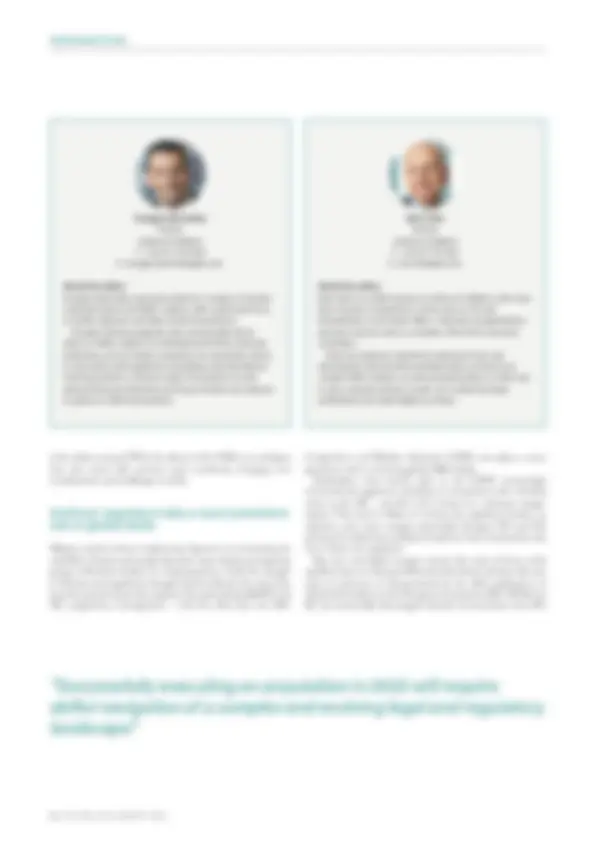

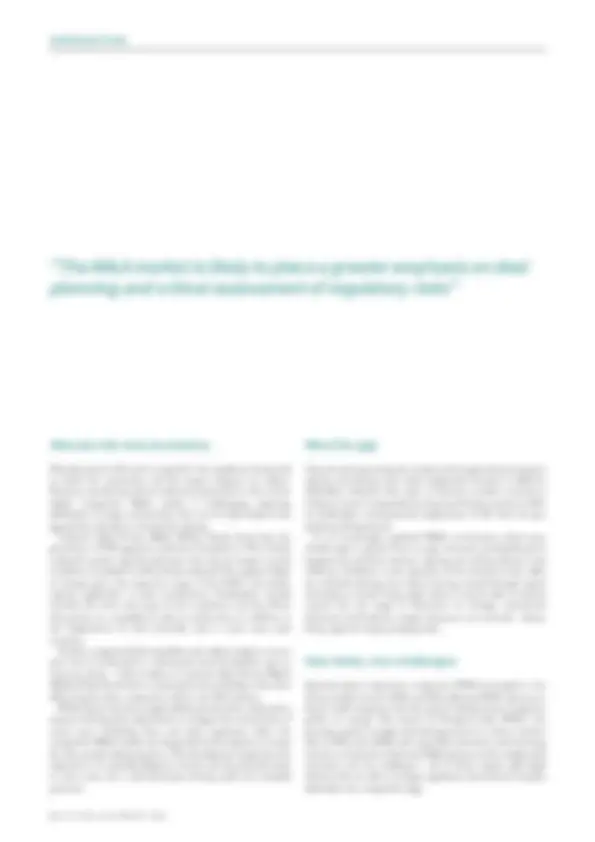
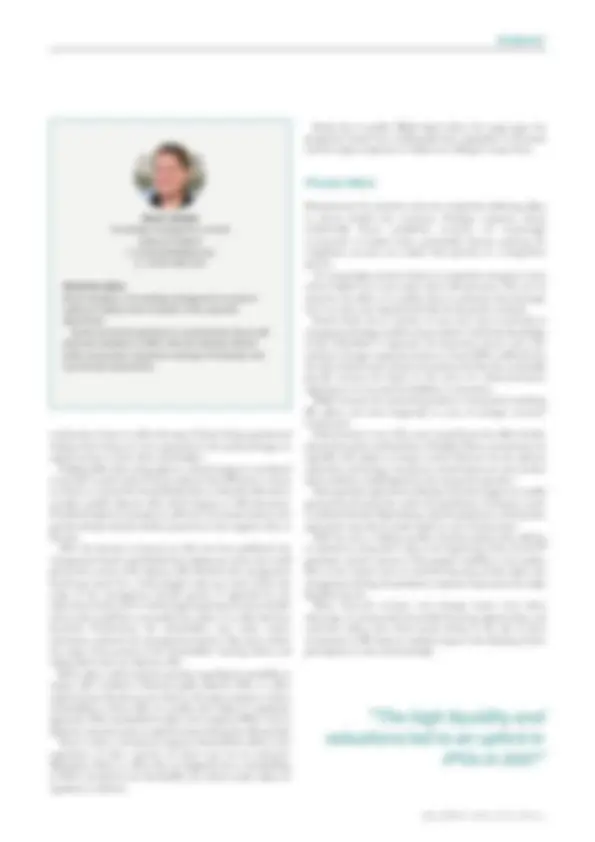
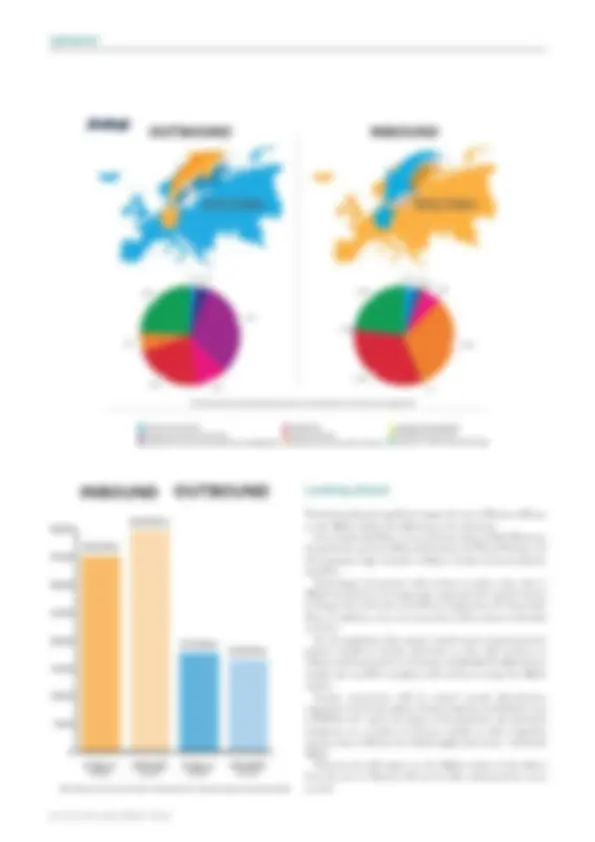
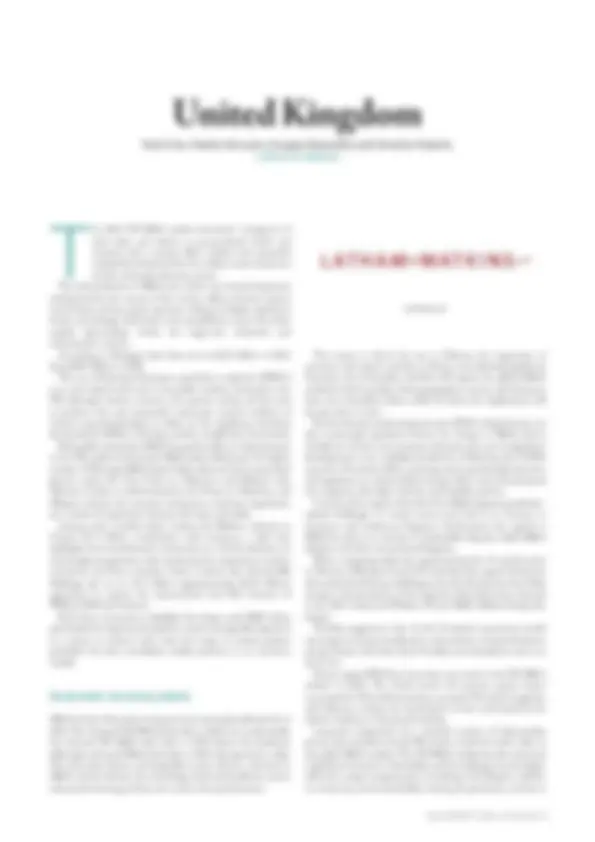
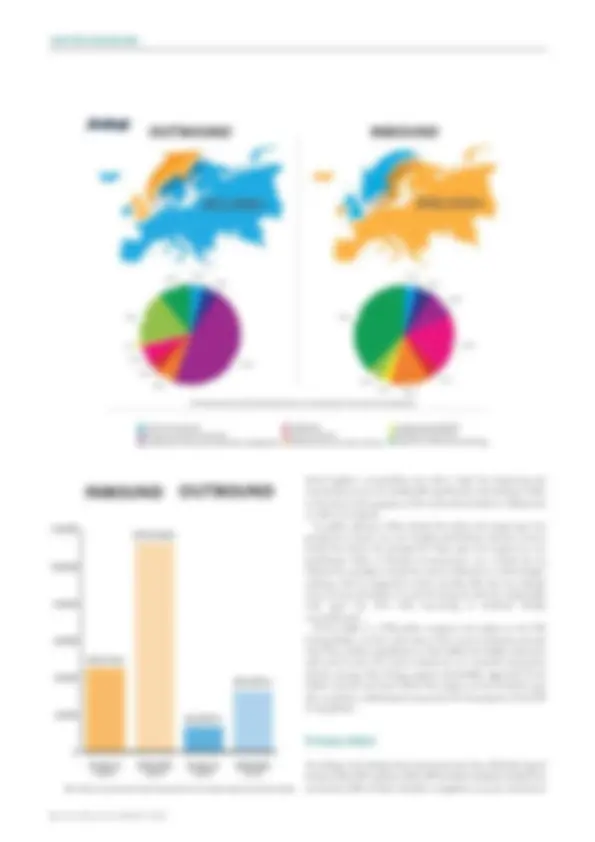
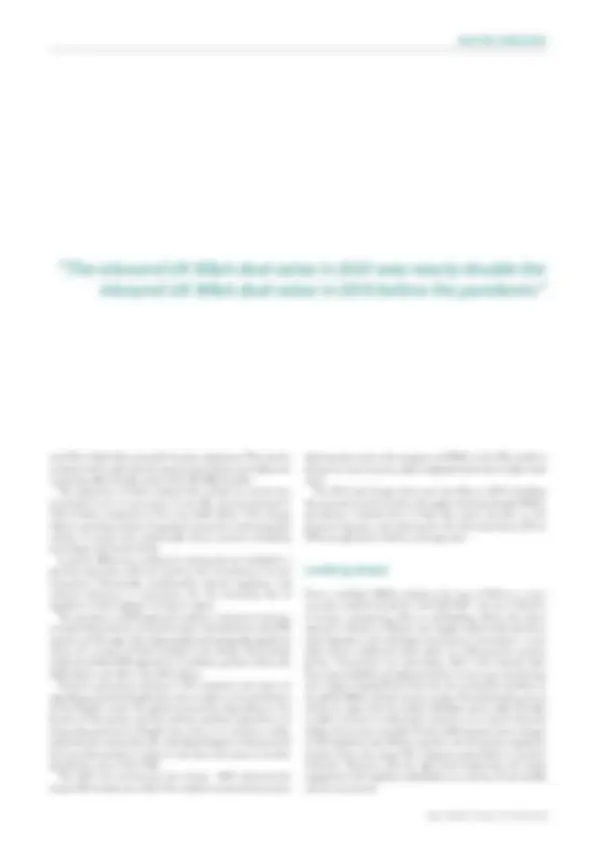
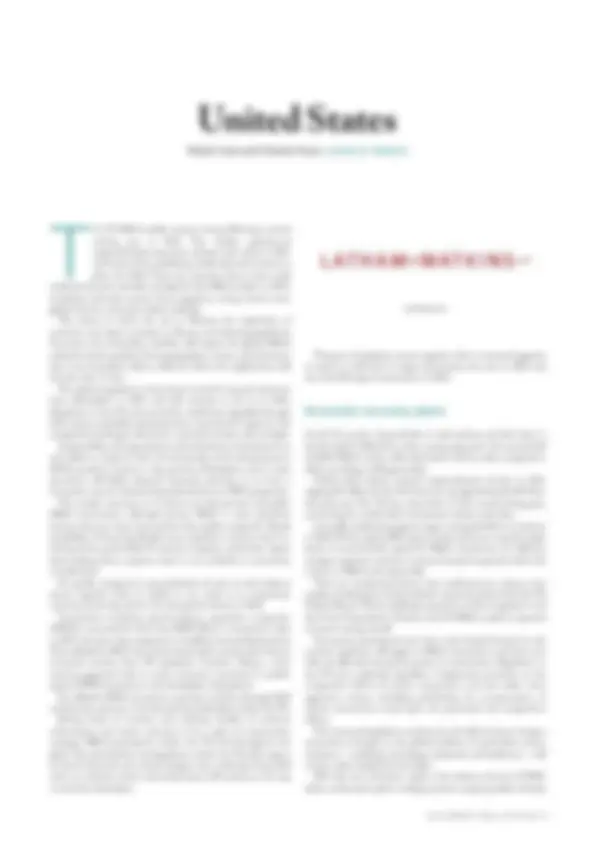
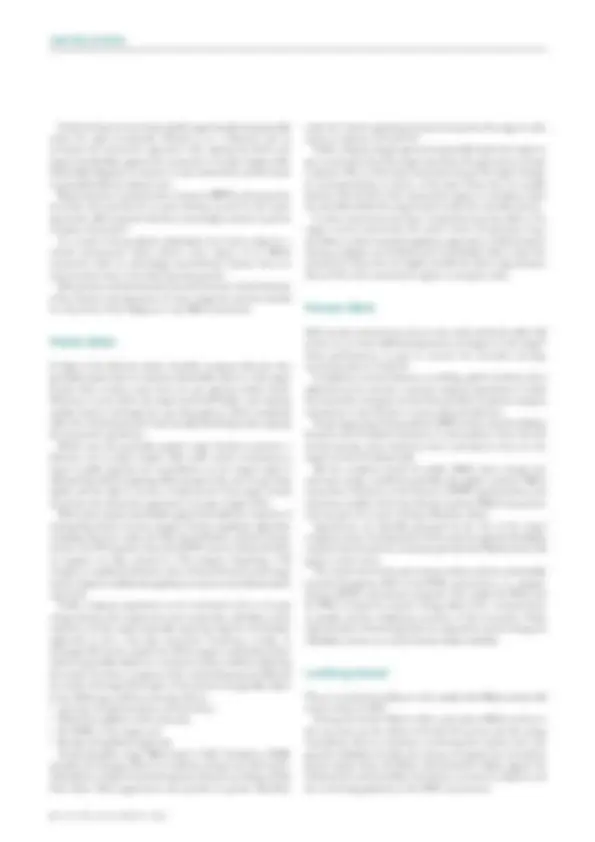


Study with the several resources on Docsity

Earn points by helping other students or get them with a premium plan


Prepare for your exams
Study with the several resources on Docsity

Earn points to download
Earn points by helping other students or get them with a premium plan
Community
Ask the community for help and clear up your study doubts
Discover the best universities in your country according to Docsity users
Free resources
Download our free guides on studying techniques, anxiety management strategies, and thesis advice from Docsity tutors
The resurgence of deal value and volume in the UK M&A market in 2021, the impact of regulatory changes such as the UK's National Security and Investment Act, and emerging trends like SPACs and ESG-linked M&A deal terms.
What you will learn
Typology: Study notes
1 / 18

This page cannot be seen from the preview
Don't miss anything!











Featuring contributions from
Advestra AllBright Law Offices ASAR – Al Ruwayeh & Partners Erdem & Erdem EY Law Fellner Wratzfeld & Partners GSK Stockmann Jadek & Pensa K&L Gates
Latham & Watkins Lee and Li, Attorneys-at-Law Raposo Bernardo & Associados Serrano Law Trilegal Weerawong Chinnavat & Partners YKVN Zepos & Yannopoulos
Lead contributor
M & A R E P O R T 2 0 2 2 | I F L R. C O M | 1
he recovery of the M&A market since the early days of the pandemic has been impressive. Even allowing for varying treatment of Covid-19 winners and losers, deal processes for resilient assets (and even for less obviously attractive assets) are often extremely competitive, and valuation multiples have continued to rise. Such high deal values and volumes have been accompanied by heightened regulatory interest in deal making, and challenges for deal planning and execution. The extent to which the war in Ukraine, the imposition of sanctions and export controls on Russia, and related geopolitical, financial and commodity volatility will impact the global M&A outlook is hard to predict – some geographies, sectors and businesses have experienced immediate effects, while for others implications will become clear in time. However, it seems certain that as regulators and governments push to introduce or enhance a wide range of rules impacting investments in multiple sectors, dealmakers should expect that the hand of government will be felt in M&A deals, even for businesses not traditionally viewed as ‘regulated’. In our view, such enhanced regulatory focus is here to stay and dealmakers must now address how best to tackle the implications and minimise the impact of regulatory interventions in deals. Successfully executing an acquisition in 2022 will require skilful navigation of a complex and evolving legal and regulatory landscape
The year 2022 is likely to bring a general step-up in enforcement, as regulators increasingly coordinate efforts, share learnings, and seek to take action on a growing range of issues and concerns. Amid the tumult of recent years, the risk of short-term corporate decisions having long-term financial and reputational consequences is heightened. Large and well-publicised fines, including for bribery, cyber and data breaches, gun jumping, cartel behaviours, and breaches of regulatory orders, mean that dealmakers must remain alert to the risk of inheriting liabilities for historical regulatory noncompliance. Rising regulation of tech innovation is also noteworthy. While fast-growing sectors such as fintech thrive, such growth has begun to attract greater regulatory scrutiny, as has the tech industry more
broadly. In the UK, for example, the Financial Conduct Authority is pursuing a formal transformation program and intends to be more assertive, and as such stakeholders should expect a stricter regulator prepared to “test [its] powers to the limit”. Stakeholders are already witnessing this in practice. While the level of supervisory oversight is set to increase, posing challenges for industry participants and impacting players operating on the unregulated perimeter, a more robust regulatory environment could also play into the hands of some buyers and create opportunities for those able to navigate change.
Growing economic nationalism and national security concerns are actively impacting M&A, with multiple jurisdictions enforcing foreign direct investment (FDI) screening regimes and intervening in the acquisition of strategically important companies. The UK’s National Security and Investment Act (NSIA) is now officially in force, granting powers to the Secretary of State for Business, Energy and Industrial Strategy (BEIS) to screen a broad range of transactions on national security grounds, allowing BEIS to block, impose conditions, or potentially unwind already completed deals that give rise to national security concerns. The NSIA arrives at a time of heightened scrutiny of foreign direct investments (FDIs) across Europe and beyond. According to the 2021 edition of Latham & Watkins’ Private M&A Market Study
www.lw.com
M & A R E P O R T 2 0 2 2 | I F L R. C O M | 3
national competition authorities that fall below the national merger control thresholds, the EC changed practice because of a perceived enforcement gap regarding potentially anticompetitive mergers falling below all EU merger thresholds. Digital and pharma/biotech mergers are in the eye of the storm, but the EC’s renewed practice is not limited to those specific sectors. In the US, the Biden Administration has focused on merger enforcement – particularly in technology, healthcare, and banking – along with specific practices that affect workers’ mobility and wages, such as non-competes in employment agreements. US regulators have announced enquiries anticipated to expand antitrust scrutiny going forward, consistent with changes practitioners are already seeing.
The M&A market is likely to place a greater emphasis on deal planning and critical assessment of regulatory risks, including developing a strategic regulatory clearance plan focused on managing the impact of filings, clearances, and other hurdles. Nascent regimes and amended approaches mean that work is required to mitigate unexpected delays or remedies. If a transaction falls within scope of a particular regime, screening processes may well involve extensive disclosure requirements that can impact deal timetables, creating barriers to closing. For example, clients have undertaken a merger control-style analysis of FDI approval issues, including analysing their own shareholder base and that of any other investors involved in the deal. Deal teams should consider opening an early dialogue with regulators to allay potential concerns.
Deal teams should also prepare for the imposition of undertakings in order to close sensitive deals, and consider how this would impact deal value and transaction rationale. Recent deals with a UK nexus have seen BEIS require undertakings designed to protect UK national security, including safeguarding the confidential information of the target, limiting the extent to which information can flow up to the ultimate investor, and imposing UK nationality requirements for board appointees. The UK government has also shown a desire for investors to give ‘voluntary’ economic commitments (e.g. relating to UK jobs), even though this falls outside the scope of existing legislation, including the NSIA. Dealmakers should note that undertakings and commitments typically relate to the target rather than the buyer, and may therefore impede the attractiveness of the target on exit. Differences in process between BEIS, the CMA, and other antitrust or FDI regulators are likely to create challenges in ensuring that remedy offers can successfully straddle relevant regimes effectively. For example, the Committee on Foreign Investment in the United States (CFIUS) may accept undertakings as a condition of clearance, including prohibiting or limiting the transfer of certain intellectual property, trade secrets, or knowhow. There is also an emerging practice of FDI regulators in one jurisdiction raising national security concerns about the likely impact of remedies offered by the investor to a regulator in another jurisdiction. Balancing the requirements of different regulators in different jurisdictions requires agility.
Robbie McLaren Partner Latham & Watkins T: +44 20 7710 1880 E: robbie.mclaren@lw.com
About the author Robbie McLaren is a partner at Latham & Watkins, and serves as global vice chair of the firm’s healthcare and life sciences industry group and co-chair of the London corporate department. Robbie’s practice focuses primarily on cross-border M&A, joint ventures and emerging companies. He represents clients who primarily operate in the life sciences, healthcare, and technology industries. He is highly regarded by clients and ranked by legal publications.
Catherine Campbell Knowledge management counsel Latham & Watkins T: +44 20 7710 1016 E: catherine.campbell@lw.com
About the author Catherine Campbell is a knowledge management lawyer in Latham & Watkins’ M&A Practice. Before joining the knowledge management team, she was an associate in the M&A Practice. Prior to joining Latham, she was an associate at an international law firm in London.
4 | I F L R. C O M | M & A R E P O R T 2 0 2 2
Deal documents will need to respond to the regulatory framework to which the transaction and the target company are subject. However, transferring risk into deal term protections in the current highly competitive M&A market is challenging, requiring dealmakers to triage and prioritise what can be back-ended to the gap period, and what is essential for signing. Latham’s 2021 Private M&A Market Study found that the prevalence of FDI approval conditions (included in 15% of deals analysed) remains significantly lower than that of merger control conditions (included in 52% of deals analysed). This appears likely to change, given the expansive scope of the NSIA and similar regimes applicable in other jurisdictions. Dealmakers should consider the terms and scope of such conditions and the efforts that parties are compelled to take to satisfy them, in addition to the implications on deal timetable and, in some cases, deal certainty. Further, compressed deal timetables and a sellers’ market in recent years have contributed to a downward trend for liability caps on warranty claims – 63% of sellers in Latham’s 2021 Private M&A Market Study limited their commercial warranty liability to less than 20% of equity value, compared to 41% in the 2014 edition. While buyers may have sought additional warranties, indemnities, and post-closing price adjustments to mitigate the uncertainties of recent years (including fines and other regulatory risks), the competitive M&A market has frequently forced acquirers to accept less-than-perfect deal protections. This development emphasises the importance of a detailed diligence exercise and the potential need, in some cases, for a risk-based post-closing audit and remedial processes.
Gap covenants governing the conduct of the target business between signing and closing came under heightened scrutiny in 2020 (as dealmakers debated what type of business conduct counted as ‘ordinary course’ in extraordinary times) and further scrutiny in 2021 (as dealmakers considered the implications of EC fines for gun jumping infringements). In an increasingly regulated M&A environment, deal teams should expect a greater focus on gap covenants, particularly given lengthening timelines between signing and closing. Buyers need sufficient confidence in the operation of the business by the seller up until deal closing, but without having control through equity ownership, or board voting rights where it may be able to exercise control over the target or determine its strategic commercial behaviour (until relevant merger clearances are received) – always being cognisant of gun jumping rules.
Special purpose acquisition companies (SPACs) emerged as the hottest market trend in 2020 and 2021, allowing SPAC sponsors to launch shell companies with the goal of taking private companies public via merger. The launch of European-style SPACs, the growing number of triple-track deal processes (i.e. with an auction sale, an IPO, and a SPAC sale as possible outcomes), and increasing instances of stressed or distressed M&A present novel, complex deal structures and new challenges – all of which require agile legal advisers who are able to navigate regulatory interventions and give dealmakers the competitive edge.
“The M&A market is likely to place a greater emphasis on deal
planning and critical assessment of regulatory risks”
Acquisitions of private companies are primarily structured as share deals and are not governed by any statutory process (other than regulatory clearances). They are a matter of negotiation between the respective bidder and seller as most relevant statutory provisions are not mandatory. In contrast, public M&A transactions have to comply with the
supervision of the German Federal Financial Supervisory Authority
Private and public transactions may be subject to German merger control. Further, the Federal Ministry of Economic Affairs and
acquisitions of German-based companies by foreign investors. The BMWi may prohibit any acquisition of 25% or more of the voting rights by a non-EU/EFTA investor or may request commitments if it poses a threat to German public order or security or violates essential national security interests. In addition, acquisitions of 10% or more of the voting rights in a company active in certain areas of critical infrastructure or in the area of military and defence may be subject to a mandatory filing requirement. Compliance with sustainability regulation, digital transformation and disruptive technology will continue to be a due diligence focus of German target companies. ESG has become an investor focus and is now driven not only by consumer demand, but also by legislative developments across multiple jurisdictions. The M&A market is therefore showing a greater demand for ESG due diligence products, particularly in relation to value chains and corporate responsibility. Further, new reporting obligations due to regulatory developments and forthcoming changes will need to be observed.
2 | I F L R. C O M | M & A R E P O R T 2 0 2 2
Regulatory tightening and political uncertainty could prove an increased hurdle to in-bound and out-bound M&A transactions throughout 2022, as FDI control regimes continue to grow and merger review proceedings remain active. Furthermore, the recent sanctions imposed on Russia will effectively exclude investments by Russian investors in Germany and impose restrictions on investments in companies with affiliates in or ties to Russia.
Foreign investors continue to wonder about notarisation requirements in Germany, particularly in connection with German limited liability companies (GmbH). A notary must read aloud to the parties all share purchase agreements, including annexes, which may prove to be a time-consuming exercise. Depending on the deal structure, parties are advised to seek employment and tax advice early as German law contains some unique features in these areas. The importance of technology has become increasingly clear during the past years. The M&A market would not have been nearly as successful during the pandemic were it not for the seamless transition to remote working, including virtual meetings, digital collaboration and transaction management platforms. Moreover, inevitably, tech companies have become extremely attractive M&A targets and have pushed valuation to previously unseen levels.
The scope of legal documentation required for the acquisition of shares in a public company depends on the type of business
Heiko Gotsche Partner Latham & Watkins T: +49 211 8828 4640 E: heiko.gotsche@lw.com
About the author Heiko Gotsche is a M&A partner at Latham & Watkins with considerable experience representing clients in domestic and cross-border M&A transactions as well as on corporate law matters. Heiko’s clients include German and international clients, including listed as well as family-owned companies, private equity investors, financial institutions, and high-net-worth individuals.
Christina Mann Counsel Latham & Watkins T: +49 69 6062 6591 E: christina.mann@lw.com
About the author Christina Mann is a counsel at Latham & Watkins and a member of the corporate department. Christina has significant professional experience in corporate law, M&A, and private equity. Prior to joining Latham, she worked for a global automotive and industrial supplier and an international law firm in Germany and New York.
M & A R E P O R T 2 0 2 2 | I F L R. C O M | 3
combination chosen as well as the type of shares being acquired and whether these shares are to be acquired over the stock exchange, via capital increase or from other shareholders. Holding 30% of the voting rights in a listed company is considered to provide ‘control’ under German takeover law. Whoever is about to achieve or exceed this threshold directly or indirectly will need to consider a public takeover offer, which requires an offer document. Unsolicited takeover attempts are still rare in Germany, however, the general attitude towards hostile transactions is less negative than in the past. After the decision to launch an offer has been published, the management board is prohibited from taking any action that could prevent the success of the takeover offer. However, the management board may search for a ‘white knight’; take any action within the scope of the management board’s powers if approved by the supervisory board and if no further legal requirements exist; and take actions that would have reasonably been taken if no offer had been launched. Furthermore, the shareholders may, under certain restrictions, authorise the management board to take action within the scope of the powers of the shareholders’ meeting before and independent from any takeover offer. BaFin takes a rather restrictive position regarding the possibility to impose offer conditions. Voluntary public takeover offers, i.e. offers made by buyers that do not own shares in the target company or whose shareholding is below 30%, are usually only subject to regulatory approvals, fairly standardised market and company MACs and no defensive measures (such as capital increases during the offer period). There is often a minimum acceptance threshold for offers as the acquisition of only a portion of shares may not be attractive. Mandatory offers, i.e. offers that are triggered once a shareholding of 30% is reached by one shareholder, can only be made subject to regulatory conditions.
Break fees in public M&A deals (when the target pays the prospective buyer) have traditionally been unpopular in Germany and few target companies or bidders are willing to accept them.
Deal processes for attractive assets are competitive, allowing sellers to choose locked box structures. Strategic acquirers, which traditionally favour completion accounts, are increasingly accustomed to locked boxes, particularly because pushing for completion accounts can weaken their position in a competitive process. An increasingly common feature in competitive situations is that certain bidders try to pre-empt entire sales processes. This can be attractive for sellers as it enables them to maximise their leverage, but it can also carry reputational risks for the parties involved. Recent deals saw an increase in earn-outs, most commonly in emerging technology and life sciences deals in which the knowledge of key individuals is important for long-term success and a fair valuation of target companies based on current KPIs is difficult. On the other hand, escrows remain uncommon, but they do occasionally provide recourse for buyers in the event of a downward price adjustment or as security for liabilities or warranties. W&I insurance has remained prevalent in transactions involving PE sellers, and more frequently in cases of strategic investors’ involvement. Deal certainty is one of the most crucial factors for sellers besides the purchase price and limitation of liability. Hence, transactions are typically only subject to merger control clearance by the relevant authorities and foreign investment control clearances. Any further deal conditions would depend on the transaction specifics. Share purchase agreements relating to German targets are usually governed by German law under the jurisdiction of German courts or arbitral tribunals. Depending on specific preferences of the parties, agreements may also be made subject to non-German laws. 2021 has seen a striking number of private equity exits, relating to valuations rising after a dip at the beginning of the Covid- pandemic and the amount of dry powder available in the market. Due to low interest rates on external financing and the tight cash management during the pandemic, corporate buyers also have high liquidity reserves. Many financial investors and strategic buyers have taken advantage of continuously favourable financing opportunities and numerous sellers have shown good timing in the sale of their investments to PE funds or strategic buyers or the floating of their participation on the stock exchange.
“The high liquidity and
valuations led to an uptick in
IPOs in 2021”
Nicole Kubalek Knowledge management counsel Latham & Watkins T: nicole.kubalek@lw.com E: +49 40 4140 3372
About the author Nicole Kubalek is a knowledge management counsel at Latham & Watkins and a member of the corporate department. Nicole has broad experience in corporate law issues with particular emphasis on M&A. She has regularly advised public and private companies in all types of domestic and cross-border transactions.
M & A R E P O R T 2 0 2 2 | I F L R. C O M | 1
he 2021 UK M&A market witnessed a resurgence of deal value and volume to pre-pandemic levels and beyond, with a strong seller’s market and extremely competitive deal processes for resilient assets (and even for less obviously attractive assets). The elevated levels of M&A were driven by renewed optimism underpinned by the success of the vaccine rollout, the low-interest environment, private equity sponsors seeking to deploy significant funds, and strategic divestment and consolidation across the wider market (particularly within the high-tech industrial and infrastructure sectors). According to Dealogic, deal value rose to $322 billion in 2021 from $281 billion in 2020. The use of listed special purpose acquisition companies (SPACs) as an exit method and route to the public markets continued in the UK, although investor concerns over sponsor voting and the need to produce ‘fair and reasonable’ statements around conflicts of interest caused dealmakers to reflect on the regulatory and fiscal framework for SPACs in Europe, and the complexities of each deal. Both public and private M&A transactions play an important part in the UK market, with private M&A deals making up a far higher number of UK target M&A deals. Public takeovers have a prescribed process under the City Code on Takeovers and Mergers (the Takeover Code), as administered by the Panel on Takeovers and Mergers, whereas the structure and process of private acquisitions are a matter of negotiation between the buyer and seller. Among other notable deals, Latham & Watkins advised on Viasat’s $7.3 billion combination with Inmarsat, a deal that highlights how transformative transactions in critical industries are increasingly recognised as a key mechanism for corporates to achieve innovation and drive customer choice. Latham also advised 888 Holdings plc on its £2.2 billion (approximately $2.96 billion) agreement to acquire the international (non-US) business of William Hill International. Both these transactions highlight how large-scale M&A deals, particularly for experienced acquirers, remain strategically important as a means to achieve both scale and scope to extend product portfolios but also consolidate market position in an uncertain market.
M&A activity witnessed a strong recovery and unprecedented rise in
The extent to which the war in Ukraine, the imposition of sanctions and export controls on Russia, and related geopolitical, financial, and commodity volatility will impact the global M&A outlook is hard to predict. Some geographies, sectors, and businesses have seen immediate effects, while for others the implications will become clear in time. Environmental, social and governance (ESG)-related factors are also increasingly significant drivers for change in M&A, driven initially by investor and consumer demand, and now by legislative developments across multiple jurisdictions. Following the COP summit in November 2021, a growing trend towards political action and regulation to combat climate change will, in turn, drive demand for companies that align with key sustainability metrics. In terms of the impact of Covid-19 on M&A disputes, pandemic- related challenges in certain sectors have led to an increase in insurance and insolvency litigation. Furthermore, the uptick in M&A has led to an increase in shareholder disputes, failed M&A disputes and other transactional litigation. When comparing deals that signed during the 12 months prior to February 2020 (pre-Covid-19) and deals that signed during the 18 months after February 2020 (post-Covid-19), there has been little change in the prevalence of the majority of key deal terms surveyed in the 2021 Latham & Watkins Private M&A Market Study (the Study). Notably, suggestions that Covid-19-related uncertainty would encourage increased consideration and inclusion of material adverse change clauses and other buyer-friendly accommodations were not borne out. Private equity (PE) firms have been very active in the UK M&A market in 2021. The Study found that private equity buyers accounted for 57% of all transactions surveyed. This level of appetite and influence is driven by record levels of cash and buoyed by the relative weakness of the pound sterling. Increased competition for a limited number of high-quality private sale mandates has led PE funds to look for better value in the public M&A markets. The UK M&A market has also witnessed a significant increase in shareholder activism seeking to secure higher offers for a target company prior to backing a bid. Despite a decline in activity by activist shareholders during the pandemic, activism is
www.lw.com
2 | I F L R. C O M | M & A R E P O R T 2 0 2 2
expected to play a key participative role, and challenge, to M&A transactions in the next few years.
The Companies Act 2006 applies to public and private companies registered in the UK. While the Companies Act does not govern M&A activity as such, its requirements dictate how deals by UK companies are implemented. The acquisition of private companies is a matter of negotiation between the buyer and seller, and no regulated offer process is required. In non-regulated industries (i.e. other than financial services, telecoms, media, pharmaceuticals), deals are not typically subject to input from regulatory bodies, save for competition and foreign direct investment (FDI) matters. Public acquisitions are governed by the Takeover Code. The end of the Brexit transition period on December 31 2020 marked the end of the European Commission’s status as the one- stop shop for the review of mergers relating to the UK meeting certain monetary thresholds. This means that if a merger satisfies the jurisdictional thresholds of the EU Merger Regulation and the UK’s Enterprise Act 2002, the Competition and Markets Authority and the European Commission may now conduct parallel assessments of the same merger in their respective jurisdictions. The UK’s National Security and Investment Act (NSI Act) came into force on January 4 2022, granting powers to the Secretary of State for Business, Energy and Industrial Strategy (BEIS) to screen a broad range of transactions on national security grounds, allowing
BEIS to block or impose conditions on deals. Due to its retroactive application, the NSI Act is already impacting deals. Early consideration of NSI Act-related timing implications will likely impact M&A timelines going forward. The Pensions Regulator gained enhanced powers in 2021. Unlike the NSI Act, the Pension Schemes Act 2021 will not have retrospective effect. However, it expands the circumstances in which the Pensions Regulator can exercise existing moral hazard powers. The Pension Schemes Act also creates new moral hazard powers that can be exercised against any ‘person’ and includes penalties that encompass criminal sanctions. Given the increasing political and public pressure on the Pensions Regulator, dealmakers should anticipate increased scrutiny of deals that involve a defined benefit pension plan going forward. The impact of Covid-19 has caused challenges for companies, but overall the lasting impact of Covid-19 on deal terms appears limited. This short-term impact largely mirrors what was seen at the time of the financial crisis in 2007/2008. ESG issues have become increasingly important for corporates in recent years. A wider range of deal provisions are being considered in light of their potential to enhance the ESG outlook of acquisitions. While ESG-linked M&A deal terms such as ESG warranties and indemnities have largely remained off the table for auction processes (often due to the compressed timetables imposed on bidders), on suitable deals we have seen early interest in the PE space for ESG- linked terms, such as ratchets to help foster stakeholder alignment on the importance of post-completion ESG enhancements to an acquired business. Merger control scrutiny is tightening — agencies are scrutinising the suitability of buyers and market dynamics more closely and
Nick Cline Partner Latham & Watkins T: +44 20 7710 1087 E: nick.cline@lw.com
About the author Nick Cline is an M&A lawyer at Latham & Watkins, with more than 20 years of experience. He focuses on UK and international, cross-border M&A, corporate reorganisations, and joint ventures and is a member of the firm’s executive committee. Nick has extensive experience advising UK plc and international client boards and legal teams on their most complex M&A matters, as well as advising them on their day- to-day corporate advisory needs. He is ranked by legal publications and rated highly by clients.
Robbie McLaren Partner Latham & Watkins T: +44 20 7710 1880 E: robbie.mclaren@lw.com
About the author Robbie McLaren is a partner at Latham & Watkins, and serves as global vice chair of the firm’s healthcare and life sciences industry group and co-chair of the London corporate department. Robbie’s practice focuses primarily on cross-border M&A, joint ventures and emerging companies. He represents clients who primarily operate in the life sciences, healthcare, and technology industries. He is highly regarded by clients and ranked by legal publications.
4 | I F L R. C O M | M & A R E P O R T 2 0 2 2
which applies a materiality test with a high bar (requiring the circumstances to be of considerable significance and aiming to strike at the heart of the purpose of the transaction) before it will permit an offer to be lapsed. In public takeover offers, break fees (when the target pays the prospective buyer) are now largely prohibited, whereas reverse break fees (when the prospective buyer pays the target) are not prohibited. Only in limited circumstances can a break fee be offered: for example, a break fee may be offered to a ‘white knight’ making a bid in competition with a hostile offer that has already been announced (subject to such fee being de minimis and payable only upon the first offer becoming or declared wholly unconditional). If the bidder is a UK public company and subject to the UK Listing Rules, and the total value of the reverse break fee exceeds 1% of the market capitalisation of the bidder, the bidder’s directors will need to treat the reverse break fee as a material transaction (which, among other things, requires shareholder approval). If the bidder controls more than 10% of the target, a reverse break fee may also constitute a related party transaction for the purposes of the UK Listing Rules.
According to the Study, which examined more than 320 deals signed between July 2019 and June 2021, 49% of deals included a locked-box mechanism, 26% of deals included a completion accounts mechanism
TARGET
TARGET
TARGET
TARGET
INBOUND^ OUTBOUND
$13,667m
$45,143m
$112,648m
$33,076m
NB: Values may exclude certain transactions, for example asset acquisitions/sales
■ Consumer products ■ Energy and natural resources ■ Financial services and investment management
■ Healthcare ■ Industrial goods ■ Infrastructure and public services
■ Leisure and hospitality ■ Professional services ■ Telecoms, media and technology
OUTBOUND INBOUND
NB only deals with publicly disclosed values are represented in the charts and infographics
$63,486m $182,029m
9, 16,
34,
7, 5,511 24,
8,
67,
2,901 7, 3,
3,
453
2,
3,
6,
28,
11,
M & A R E P O R T 2 0 2 2 | I F L R. C O M | 5
and 25% of deals did not provide for price adjustment. This trend is consistent with results from the previous four editions and reflects the continuing seller-friendly nature of the UK M&A market. The proportion of deals analysed that include an earnout has continued to rise in recent years. In the UK, earnouts featured in 13% of deals, compared to 7% in the 2020 edition. This change reflects a growing number of ‘acquihire’ transactions and strong deal volume in sectors that traditionally favour earnouts (including technology and biotech deals). In private M&A, the conditions to closing that are included in a purchase agreement will vary based on the circumstances of each transaction. Historically, conditionality beyond regulatory and antitrust clearances is uncommon, but the increasing role of regulation in deal making is having an impact. The prevalence of FDI approval conditions continues to increase, corresponding with the increased number of jurisdictions with FDI regimes, and the high-value, high-profile and strategically significant nature of a number of deals included in the Study: 15% of deals analysed included FDI approval as a condition, up from 11% in the 2020 edition and 10% in the 2019 edition. Purchase agreements relating to UK companies and assets are typically governed by English law and are subject to the jurisdiction of the English courts. For global transactions, depending on the location of the parties and their advisers, purchase agreements are frequently governed by English law (since it is viewed as stable, impartial and commercial, with a developed litigation infrastructure) but may alternatively be subject to the laws and courts of another jurisdiction, such as New York. The 2021 exit environment was strong – 2021 witnessed the busiest IPO market since 2014. The market encountered innovative
deal structures such as the emergence of SPACs in the UK and direct listings. In some instances, sellers employed dual-track or triple-track exits. The FCA rule changes that came into effect in 2021 (including the removal of certain barriers that apply to listing through SPACs, permitting a limited form of dual class share structure on the premium segment, and reducing the free float level from 25% to 10%) are expected to further encourage exits.
From a confident M&A outlook at the start of 2022, to a more uncertain outlook towards the end of Q1 2022 – the war in Ukraine is having a dampening effect on dealmaking. Deals with direct exposure to Russia or Ukraine have largely halted, while elsewhere much depends on the individual circumstances of each deal — some deals remain unaffected, while others are influenced by cautious parties. Transactions are proceeding, albeit with lessened debt financing availability and tightened terms in some cases, but the long term impact of geopolitical, financial, and commodity volatility on the global M&A outlook remains unclear. Notwithstanding recent events, we expect that the market will likely remain ‘seller-friendly’ as sellers continue to seek greater certainty as to a buyer’s financial ability and covenant strength. Further, following the recent changes to UK regulations post-Brexit, acquirers now face greater regulatory burdens when they target UK companies, particularly in sensitive industries. However, with the right level of planning and timely engagement with regulators, dealmakers can continue to successfully execute transactions.
“The inbound UK M&A deal value in 2021 was nearly double the
inbound UK M&A deal value in 2019 before the pandemic”
2 | I F L R. C O M | M & A R E P O R T 2 0 2 2
a SPAC is formed to raise cash in an initial public offering (IPO), and the proceeds are subsequently used to complete a business combination with a private target, typically within two years of the SPAC’s IPO. SPAC transactions accounted for approximately 10% of the global deal volumes in 2021. Through the latter half of 2021 and early 2022 the SPAC alternative became less prevalent, as the performance of many companies taken public through SPAC structures came under pressure in the public markets. PE firms remain a driving force of deal-making. Despite rising interest rates and increased market volatility, PE participants are expected to remain quite active in 2022, with uncommitted capital at PE firms remaining at record levels. Shareholder activists are also expected to have a greater profile in
US M&A transactions are subject to regulation by both the federal government and the target company’s state of incorporation.
The federal government primarily regulates the issuance and sale of securities through the Securities and Exchange Commission (SEC), antitrust matters through the Federal Trade Commission and the Antitrust Division of the US Department of Justice and foreign investment that may have national security implications through the Committee on Foreign Investment in the United States (CFIUS). The laws, rules and regulations administered by the SEC are particularly relevant in the purchase or sale of a US public company. The laws of the target’s state of incorporation govern that company’s internal affairs and impose requirements for shareholder approval of mergers and the procedures for effecting mergers. The Biden administration announced antitrust priorities in 2021 designed to address perceived shortcomings in antitrust enforcement. These evolving antitrust priorities will expand antitrust scrutiny going forward, consistent with changes practitioners are already seeing at the antitrust agencies within the US. The potential for new legislation within the US with respect to both horizontal and vertical mergers that could alter long-held views on antitrust review and enforcement will continue to be top of mind for dealmakers. In negotiating transaction agreements, practitioners will need to be aware of these risks and how they are allocated, together with the time required to navigate the antitrust review process. More deal parties have adjusted their transaction structures and used Covid-specific terms and conditions to allocate pandemic- related risks, including through the use of contingent pricing structures and carve-outs in material adverse effect (MAE) definitions and interim operating covenants to permit targets to take
Robert Katz Partner Latham & Watkins T: +1 212 906 1609 E: robert.katz@lw.com
About the author Robert Katz is a partner in the New York office of Latham & Watkins and a member of the firm’s global Mergers & Acquisitions Practice. He represents financial institutions, public companies and private equity sponsors and their financial advisers in their highest-stakes M&A transactions across geographies and industries, including industrials, healthcare, technology, and media and communications. Robert’s practice includes cross-border transactions, governance matters, joint ventures, leveraged buyouts, public and private acquisitions and divestitures, spin-offs, takeover and activist defence strategies and tender and exchange offers.
Charles Ruck Partner Latham & Watkins T: +1 212 418 7625 E: charles.ruck@lw.com
About the author Charles Ruck is a partner in the New York and Orange County offices of Latham & Watkins and serves as global chair of the firm’s corporate department. Charles’s practice includes advising on M&A, capital markets, and general corporate and securities matters. He serves as primary outside counsel to a number of public and privately held companies and he often represents boards of directors and special committees in complex strategic corporate governance matters.
M & A R E P O R T 2 0 2 2 | I F L R. C O M | 3
actions in response to Covid-19. Dealmakers and C-suite executives will likely demand increased attention as to how a transaction may be viewed and positioned from an ESG perspective. The Biden administration has brought a renewed focus to antitrust enforcement. There are more than a dozen federal agencies within the US reviewing, analysing, and providing input on a renewed approach to competition/antitrust governance. The general US framework of protecting consumers, rather than competitors, is being re-visited writ large. Regulators are now more keenly focused on other constituencies, including labour, the environment and other ESG-related concerns. This potential revised regulatory framework, together with time required to navigate regulatory review and the remedies that regulators may ultimately require, is something that all parties should consider thoughtfully when contemplating a potential M&A transaction.
Unlike the locked box approach that is more common in many non- US jurisdictions, in most US private acquisitions the purchase price agreed to at signing is usually subject to closing or post-closing adjustment based on the amounts of certain financial accounts of the target (e.g., cash, indebtedness, and net working capital) on the closing date. Under this approach, the parties generally must spend more time negotiating the adjustment mechanics and related accounting methodologies.
TARGET
TARGET
TARGET
TARGET
INBOUND^ OUTBOUND
NB: Values may exclude certain transactions, for example asset acquisitions/sale
■ Consumer products ■ Energy and natural resources ■ Financial services and investment management
■ Healthcare ■ Industrial goods ■ Infrastructure and public services
■ Leisure and hospitality ■ Professional services ■ Telecoms, media and technology
OUTBOUND INBOUND
NB only deals with publicly disclosed values are represented in the charts and infographics
$506,261m
INBOUND
$431,152m
19, 25,
84,
58, 29,
7,
79,
22,
105,
11,
260,
32,
39,
23,
7,
6,
111,
12,